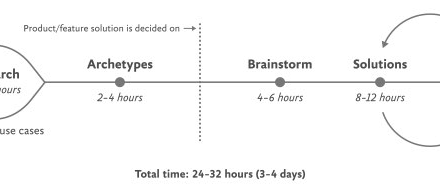They’re crunchy and hydrating.
Any exercise called the “good morning” is worth getting to know. What is the good morning exercise, you may ask? This strength-training move, which involves hinging forward while holding a weight on your back, offers many of the benefits of a deadlift.
The move strengthens every muscle along the backside of your body (called your posterior chain), improves posture, increases range of motion, and may even help prevent injury.
Ahead, experts demonstrate how to perform the good morning exercise, explain its benefits, outline common mistakes to avoid, and more.
How to do the good morning exercise perfectly every time
Performing the good morning exercise with proper form is key to maximizing its benefits. Ingrid Clay, CPT, a personal trainer with the Centr app, demonstrates how to do good mornings, step by step.
- Set up by standing with your feet shoulder-width apart, knees slightly bent.
- Place a barbell across your upper back (not on your neck) and grip it (palms forward) with your hands slightly wider than shoulder-width apart.
- Keep your chest up, shoulders back, and core engaged with a slight arch in your lower back.
- Maintain a slight bend in your knees as you hinge forward at your hips, pushing your butt back. Lower your torso until it’s nearly parallel to the floor, keeping your back straight and core engaged.
- Squeeze your glutes and drive through your hips to return to the starting position.
Which muscles do good mornings work?
The good morning exercise taps the following muscles, according to the International Sports Sciences Association:
- Hamstrings (muscles in the backs of your thighs)
- Erector spinae (muscles that run alongside your spine)
- Gluteus maximus (the largest muscle in your mutt)
- Core (midsection)
Benefits of adding the good morning exercise to your workouts
1. They can improve your range of motion
As you hinge forward and lower your chest toward the ground during the good morning exercise, you’ll likely feel a gentle stretch in your hamstrings and lower back. Over time, this repeated stretching helps improve flexibility and range of motion in these areas, says James Bickerstaff, CPT, a personal trainer with OriGym in the U.K.
“This exercise also emphases proper hip range of motion, making your hip joints more mobile. This is crucial for performing daily activities and other forms of exercise,” Bickerstaff notes.
2. They strengthen the entire backside of your body
Good mornings tap every muscle along your posterior chain (the muscles on the backside of the body), particularly the lower body and core. (FYI: This helps prevent bone and muscle loss.)
“The hamstrings are heavily engaged during both lowering and rising phases of the movement,” Bickerstaff says. The glutes activate when you bend and straighten your hips, while muscles in the torso fire to keep your spine from rounding, he adds.
“This exercise also emphases proper hip range of motion, making your hip joints more mobile. This is crucial for performing daily activities and other forms of exercise.” —James Bickerstaff, CPT
3. They may help prevent injury
Exercises that improve strength and range of motion may help lower your risk for injuries caused by tight, weak, or overworked muscles.
“The lower back and hamstrings are often weak points for many people, which is why good mornings are especially helpful for those prone to back and hip and injuries,” says Ellen Thompson, CPT, head personal trainer at Blink Fitness in New York City.
By targeting your hamstrings, glutes, and lower back, good mornings can also help build strength in muscles that stabilize the pelvis and spine, “reducing the risk of strains and injuries in these areas,” Bickerstaff says.
4. They help improve your posture
Those who sit a lot during the day tend to develop the hallmarks of poor posture: a rounded spine and shoulders. While harmless in the short term, adopting this position for prolonged periods can create tightness and pain in your upper and lower back and neck, per the Mayo Clinic Health System.
“Good mornings help improve posture by strengthening the posterior chain, promoting proper hip hinge mechanics, engaging the core, and increasing awareness of your body mechanics,” Bickerstaff says.
For example, learning to properly hinge at the hips rather than rounding the back can help maintain an upright, aligned spine. In addition, the exercise requires a strong and engaged core to stabilize the spine, which translates to better postural habits both during exercise and in everyday activities, according to Bickerstaff.
“When you perform good mornings with proper form it increases awareness of correct posture and body mechanics, encouraging better posture throughout the day,” he says.
4 variations of the good morning exercise
1. Bodyweight good morning
It’s a good idea to perform good mornings without external weight when first starting. “This helps you master the form before adding resistance,” Clay says. (Check out more of our favorite bodyweight workouts!)
- Set up by standing with your feet shoulder-width apart, knees slightly bent. Place your hands behind your head.
- Keep your chest up, shoulders back, and core engaged with a slight arch in your lower back.
- Maintain a slight bend in your knees as you hinge forward at your hips, pushing your butt back. Lower your torso until it’s nearly parallel to the floor, keeping your back straight and core engaged.
- Squeeze your glutes and drive through your hips to return to the starting position.
2. Banded good morning
Once you feel comfortable doing a bodyweight good morning, use a looped resistance band to increase the challenge. “This provides resistance but is easier to manage than a weighted bar,” Clay says. Begin with a thinner, lighter band and gradually progress to thicker, heavier bands.
- Open a looped resistance band to create a large loop and step on the bottom half with your feet shoulder-width apart, knees slightly bent. Ensure the band is under the arches of your feet. Place the upper half of the band behind your upper back (not your neck) and grip with your hands.
- Keep your chest up, shoulders back, and core engaged with a slight arch in your lower back.
- Maintain a slight bend in your knees as you hinge forward at your hips, pushing your butt back. Lower your torso until it’s nearly parallel to the floor, keeping your back straight and core engaged.
- Squeeze your glutes and drive through your hips to return to the starting position.
3. Seated good morning
If you feel lower back discomfort or pain during good mornings, perform the exercise seated on a bench or chair. “This variation reduces the load on the lower back and focuses on the upper back and core,” Clay says.
- Sit on a bench or chair with your feet flat on the floor, shoulder-width apart. Place your hands behind your head.
- Keep your chest up, shoulders back, and core engaged with a slight arch in your lower back.
- Hinge forward at your hips and lower your torso until it’s parallel (or close to parallel) to the floor. Keep your back straight and core engaged.
- Lift your torso to return to the starting position.
4. Sumo good morning
The sumo good morning is a variation that targets your inner thighs and adds a different challenge to the movement, Clay says. Try this variation if you’re ready for something new.
- Set up by standing with your feet wider than shoulder-width apart, toes pointed outward at a slight angle, and knees slightly bent.
- Place a barbell across your upper back (not on your neck) and grip it (palms forward) with your hands slightly wider than shoulder-width apart.
- Keep your chest up, shoulders back, and core engaged with a slight arch in your lower back.
- Maintain a slight bend in the knees as you hinge forward at your hips, pushing your butt back. Lower your torso until it’s nearly parallel to the floor, keeping your back straight and core engaged.
- Squeeze your glutes and drive through your hips to return to the starting position.
“The lower back and hamstrings are often weak points for many people, which is why good mornings are especially helpful for those prone to back and hip and injuries.” —Ellen Thompson, CPT
Avoid these common good morning exercise mistakes
Avoid rounding your spine at any point during the exercise, as this puts a lot of strain on your lower back. Instead, keep your chest up, back straight (with a slight arch in the lower back), and eyes up, Clay says.
Another common mistake is locking out your knees. “Locking out your knees shifts the focus away from your hamstrings and glutes, reducing their activation,” Clay says. This makes the exercise less effective in targeting these muscles. Fully extending the knees also puts a lot of pressure on the joints, ligaments, and tendons, “which can lead to discomfort or even damage over time,” Clay says.
Maintain a slight bend in your knees to keep your hamstrings and glutes engaged throughout the movement. Bending your knees also helps relieve pressure on the joints and provides a more stable base that allows better control over your movement, Clay notes.
As with any exercise, using too much weight during the good morning can compromise your form and increase injury risk. “Start with a lighter weight and focus on nailing your form. Gradually increase your weight as you become more comfortable with the movement,” Clay says.
How to add the good morning exercise to your routine
“Incorporating good mornings into your workout routine is beneficial for targeting the posterior chain and improving functional movement,” Bickerstaff says. He recommends performing good mornings once a week on a leg-focused day. Place the exercise toward the middle of your session, after bigger lifts, such as barbell squats and conventional deadlifts.
“For beginners, it’s recommended to do two to three sets of 8 to 12 reps with lighter weights; for advanced lifters, three to four sets of 6 to 10 reps with heavier weights,” Bickerstaff says.
Recommended Story For You :

The alpine secret for healthy weight loss

The Most Potent Fast-Acting Formula For Incinerating Stubborn Fat

Real Cortexi Users Real Life‑Changing Results

This Cold Drink Might Trigger Your Prostate

Red Boost is a powerful new formula for boosting male sexual health.

Everything you eat or drink eventually reaches your liver for processing.

Brand New Probiotics Specially Designed For The Health Of Your Teeth And Gums

Empowering You to Take Control of Your Blood Sugar Health!

Scientists Finally Discover the Root Cause of Belly Fat and Unexplained Weight Gain






